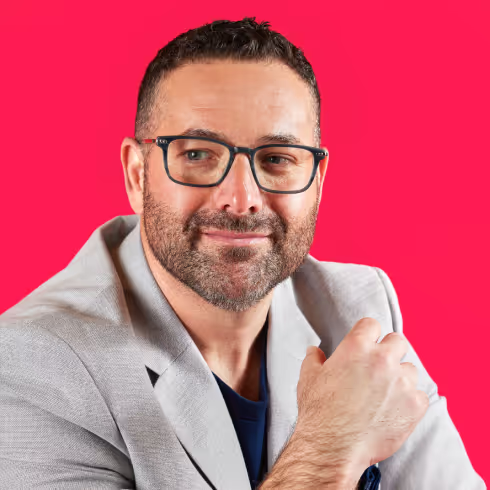Pushing limits and embracing challenges – How leaders create a healthy team environment


"Every day is a new opportunity. You can build on yesterday's success or put its failures behind and start over again. That's the way life is, with a new game every day, and that's the way baseball is." — Bullet Bob Feller
There’s no “I” in Team… Every strike brings you closer to the next home run… If your uniform doesn't get dirty, you haven't done anything in the game… How many baseball references can we fit into one intro? Trust us, there’s a method to our metaphor. Baseball, like any project, professional or otherwise, is a collaboration. There may be a star player and managers and coaches, but success hinges on the ability of individuals to work together in harmony, and leaders in any realm need to remember this when balancing the dynamics of a group.
This week on Catalyst, Brant Beard, Assistant Vice President of Application Services at Parallon, hit a home run in his discussion with Launch by NTT DATA’s Clinton Bonner and Robbie Elliott. Check out some of the highlights, then listen to the full play-by-play.
Authenticity in leadership
Puffing yourself up to look bigger and badder than you really are can be tempting, but this is no time for peacocking around. Your team will recognize and appreciate if you’re real and relatable. Be human. Share your out-of-office experiences. And, most importantly, be true to yourself.
Leadership and culture
Effective leaders motivate and connect with people, create a sense of urgency, and foster an environment where everyone contributes to a strong culture that lasts over the long term.
Embracing challenges
Don’t be afraid to take on challenging projects or enter chaotic environments! There’s no real progress or learning on the path of least resistance, so view these curveballs as great opportunities for growth and innovation. The most impactful leaders see the potential in a struggling team, and are driven to develop creative solutions.
Collaboration and partnership
If you’re not embracing open communication, diverse perspectives, and a culture of trust and teamwork, then what’s the point? Don’t surround yourself with people eager to tell you “Yes”. If no one ever says “No” to your ideas, you’re not actually collaborating.
Design-led MVPs
Working fast is great; skipping steps isn’t. Skip over the design phase of your development process and your minimum viable products will not succeed.
Continuous improvement and innovation
Maximum impact and success come from continuous improvement and pushing boundaries.If innovation and movement have halted, it’s not because you’ve reached peak performance, you’ve likely just stalled out. This is when it’s helpful to have a good balance of dreamers and doers. The dreamers help you look outside the box, and the doers can help temper expectations with what’s actually realistic.
Effective communication
Without effective communication among team members and partners, you can’t build trust and truly successful relationships. Your professional relationships are obviously different from your personal relationships, but they all require great communication and taking the time and effort to build trust.
As always, don’t forget to subscribe to Catalyst wherever you get your podcasts! We drop a new episode every Tuesday, and each one is jam-packed with catalysts for digital experiences that move millions.





